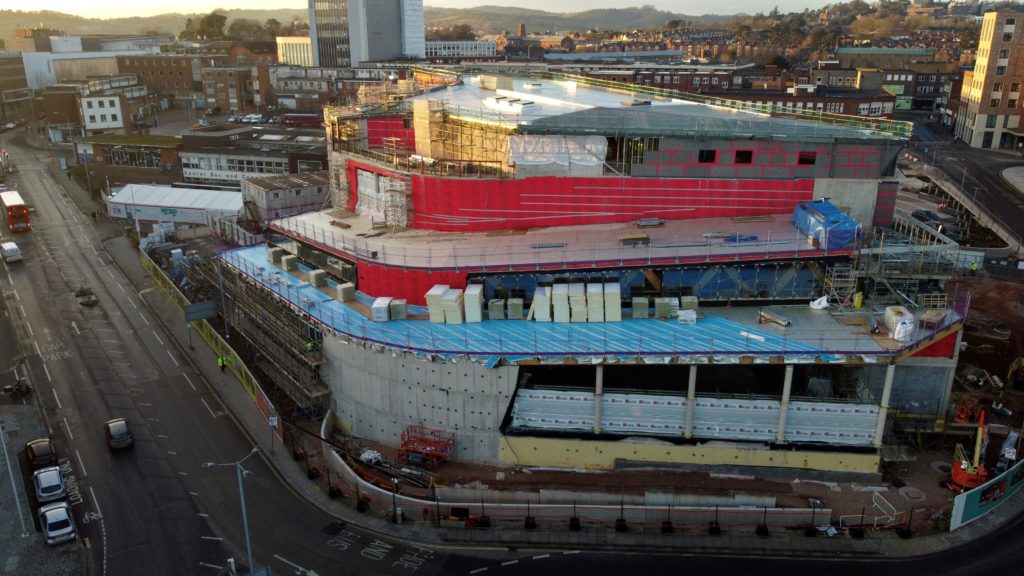CASE STUDY: Kier

St Sidwells Point Leisure Centre – Exeter City Council
Creating the UK’s first Passivhaus standard ultra-low carbon leisure centre, designed to save up to 70% on annual energy costs.
 The Challenge:
The Challenge:
Exeter City Council are currently working with Kier to build a new state of the art leisure centre, procured through the Southern Construction Framework (SCF). Situated in Exeter city centre, the new leisure centre will replace an existing, aging building and incorporate a range of facilities, including:
• Main swimming pool & learners pool with moveable floors
• Confidence water pool
• 100 seat spectator seated area
• Café to seat 50
• 150 station fitness gym and two fitness studios
• Health suite and spa facility
• Children’s soft play area
Fitting with Exeter’s wider green initiatives, the project is being built using the ultra-energy efficient Passivhaus standard. Once complete, the building is designed to save up to 70% on annual energy costs.
The Solution:
St Sidwells Point will be the first UK leisure facility built to the Passivhaus standard. In order to achieve the stringent build criteria, Kier has worked closely with its subcontractors to deliver a ‘Passivhaus Passport’ training scheme, equipping its staff with the knowledge and skills to meet the requirements.
Working closely with Building Greater Exeter, we have used the project to showcase the range of opportunities in the construction market, working with them to inspire young people and provide opportunities for apprentices, up-skilling and re-skilling.
Work started on site in January 2019 and will take around two years to complete.
 The Impact:
The Impact:
Once open, St Sidwells Point leisure centre is expected to attract around 500,000 visits a year, twice the amount of the previous leisure centre.
Due to ultra-filtration, the pools will have exceptional water quality with minimal chemical content, which will greatly improve the experience for swimmers compared to a standard pool.
The building has been modelled to withstand predicted changes in climate conditions up to 2080. Saving up to 70% on annual energy costs in comparison to lower efficiency building techniques.
